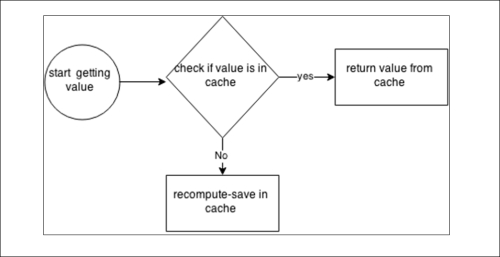Implementing your own caching algorithm
In this section, let us start by implementing a simple cache algorithm and see its draw backs, and then show how spring caching can be used to solve the problems.
Let's draw a simple flow chart to look at the caching scenario:

Let's see how we can implement caching in a simple way. Think of generating a Fibonacci number. A Fibonacci number is generated by adding its previous two Fibonacci numbers. So we can compute a simple class in java and see how we can use caching here.
Let's create a map to cache the objects:
import java.util.HashMap;
import java.util.Map;
public class FibonacciCache {
private Map<Long, Long> cachemap = new HashMap<>();
public FibonacciCache() {
// The base case for the Fibonacci Sequence
cachemap.put(0L, 1L);
cachemap.put(1L, 1L);
}
public Long getNumber(long index) {
// Check if value is in cache
if (cachemap.containsKey(index)) {
return cachemap.get(index);
}
...
































































